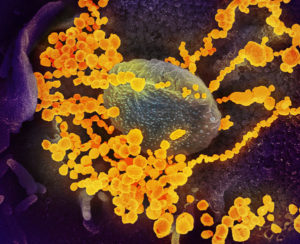
Writing about how the various COVID-19 vaccines work and the challenges that may lie with emerging genetic variants of SARS-CoV-2 can be challenging for journalists, as it requires explaining the technicalities of genetics in layman’s terms.
Independent journalist Marla Broadfoot, who has a doctorate in genetics and molecular biology, suggests using metaphors and asking sources to elaborate on favorite metaphors they’ve used to explain virus genetics and the COVID-19 vaccine to family and friends.
“You don’t have to explain the nitty-gritty details for people to understand genetics,” Broadfoot said in an AHCJ “How I Did It” interview. “If you can give people something to relate to, then they can more easily grasp complex concepts.”
To explain how mRNA genetic engineering in the COVID-19 vaccine works, Broadfoot’s favorite analogy is to describe mRNA as scribbling paper that can be used to write offhand notes to oneself and later throw away.
“mRNA is a kind of molecular scratch paper that carries these instructions around the cell where they can be used to construct proteins,” she said. “In the case of the COVID-19 vaccines, the mRNA is giving our cells instructions for making the spike protein, a harmless bit of the coronavirus. Our cells recognize the protein as foreign and make antibodies against it and against the virus. In the meantime, the mRNA scratch paper disintegrates.”

As to the virus variants, she cautions journalists to remind their audiences that all viruses normally mutate. Most of the time, the changes are either meaningless or are variations that can even make a virus less transmissible.
“It sounds like a super scary thing: ‘The virus is mutating!’” Broadfoot said. “Just because the virus is mutating doesn’t mean the vaccines won’t work, so a bit of a caution is in order. Otherwise, every time we see a mutation in a virus, we will have to sound another alarm, and it will be like the boy that cried wolf.
Broadfoot added that while some recent reports about variants are concerning, existing approved vaccines based on mRNA technology can be retooled.
“Even if we find that the virus has evolved resistance to our vaccines, that doesn’t mean we have to go back to the drawing board,” she said. “Our current vaccines are based on mRNA, strips of genetic code that can easily be swapped out to accommodate any consequential mutations in the virus. So, genetics may solve it.”







